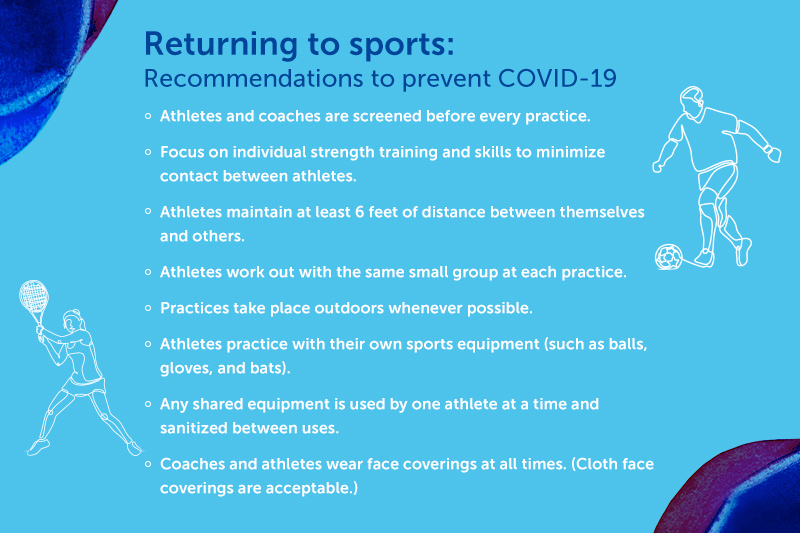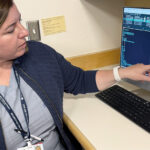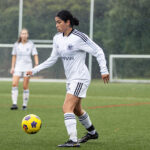How athletes can stay healthy and injury-free during COVID-19

June is normally a time for student athletes to celebrate a long season of training and competition. But athletes are at loose ends this year with the suspension of sports during COVID-19. “For anyone who identifies as an athlete, it’s almost like they’ve lost a part of themselves,” says Kimberly O’Brien, clinical social worker in the Sports Medicine Division at Boston Children’s Hospital. She worries about an increase in anxiety and depression in athletes who have been cut off from activities they love.
Sports medicine physicians like Dr. Andrea Stracciolini, worry about the increased risk of injury when athletes return to their sports. Stress fractures and other overuse injuries tend to spike in the fall when competitive athletes dive into high-level training after taking the summer off. COVID-19 is keeping many kids out of practice longer than usual, and some may feel even more anxious to come back with a bang. “We worry we’ll see more significant injuries, and on a larger scale when kids return to sports after COVID-19,” she says.
How can school athletes manage their feelings off the field and make sure their bodies are ready when they return?
Mental well-being for athletes during COVID-19
O’Brien normally helps athletes cope with the pressures they face in competitions or while recovering from injury. COVID-19 has created a different type of sports anxiety. “Athletes worry about the long-term impact that not playing will have on their performance,” she says. “Juniors who hoped their success in sports would help get them into college are particularly concerned.”
Given the amount of uncertainty in their lives right now, O’Brien encourages athletes to focus on the here and now. Some of her athletes find comfort in projects like cooking or knitting. Others channel their energy into activities that allow for social distancing, like running or biking. Still others practice mindful meditation.
Kim O’Brien describes mental skills athletes can use to cope with uncertainty and disappointment.
Staying strong and injury free
While it would be foolish to pretend that COVID-19 is good for athletes, the break from traditional training has created time for them to focus on strength and conditioning. “Strength training is one of the best ways young athletes can reduce their risk of injury,” says Dr. Stracciolini. “Normally, most athletes don’t have time for it. This is a silver lining in my opinion.”
She recommends working with a trainer who has experience working with young athletes. The Micheli Center for Sports Injury Prevention, for instance, works with children, teens, and young adults. Their trainers are currently offering group workouts online for a variety of age groups. “These trainers know what types of strength training work best for kids.”
Reducing the infection risk of sports during COVID-19
When organized sports start up again, practices will look very different. Social distancing and hand hygiene will be top priorities. Many drills, such as passing balls or blocking opponents, will be off limits until close contact no longer puts athletes at risk of infection.

Sports will happen
The stages of re-entry will take time, but athletic activities will continue to benefit kids’ physical, social, and emotional health for a long time to come. “Sports will happen,” says Dr. Stracciolini. “We’ll get to the point where kids can train together and compete against other teams. We just have to get there safely.”
Related
Early sports specialization: How to support your child
What running mistakes lead to injury?
Get more answers about Boston Children’s response to COVID-19 and the Sports Medicine Division.
Related Posts :
-

Adam takes a pause from his active life for non-ossifying fibroma
Adam was 11 in early 2024 when he and his bike slid under a downed tree. Such events aren’t unusual for ...
-

Ask a sports medicine specialist: Why are ACL tears so common among female athletes?
When an athlete is sprinting after an opponent who suddenly stops or changes direction, their anterior cruciate ligaments (ACLs) make ...
-

Forging a path back to school after orthopedic trauma
Orthopedic trauma can force children to miss school, sometimes for an extended period. But even when patients have regained enough ...
-

Jackie’s dreams of playing professional soccer back on track after ACL surgery
From her dorm in Newcastle, England, Jackie Zapata can hear fans roaring in the soccer stadium a few blocks away. ...





